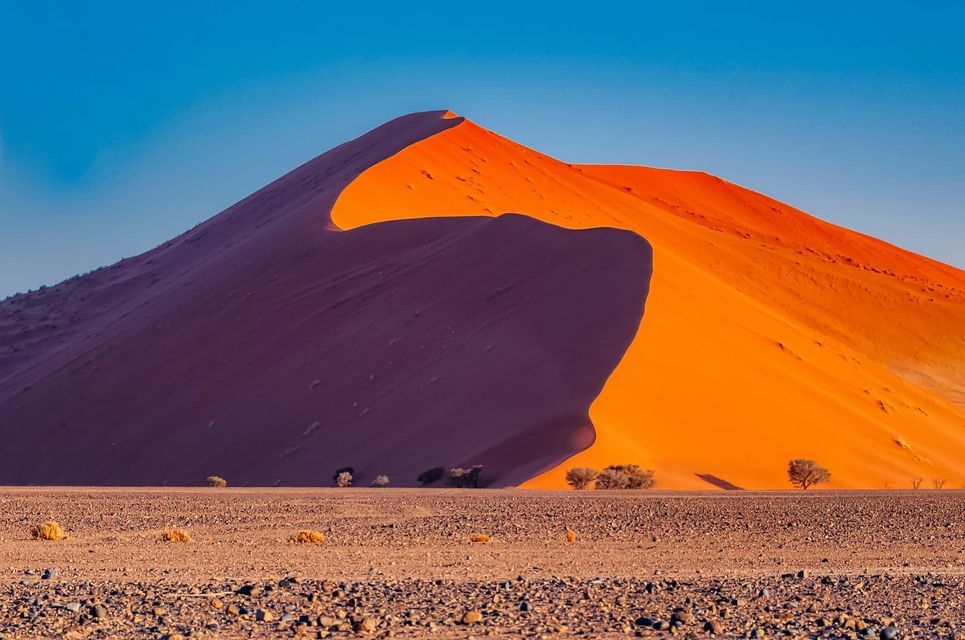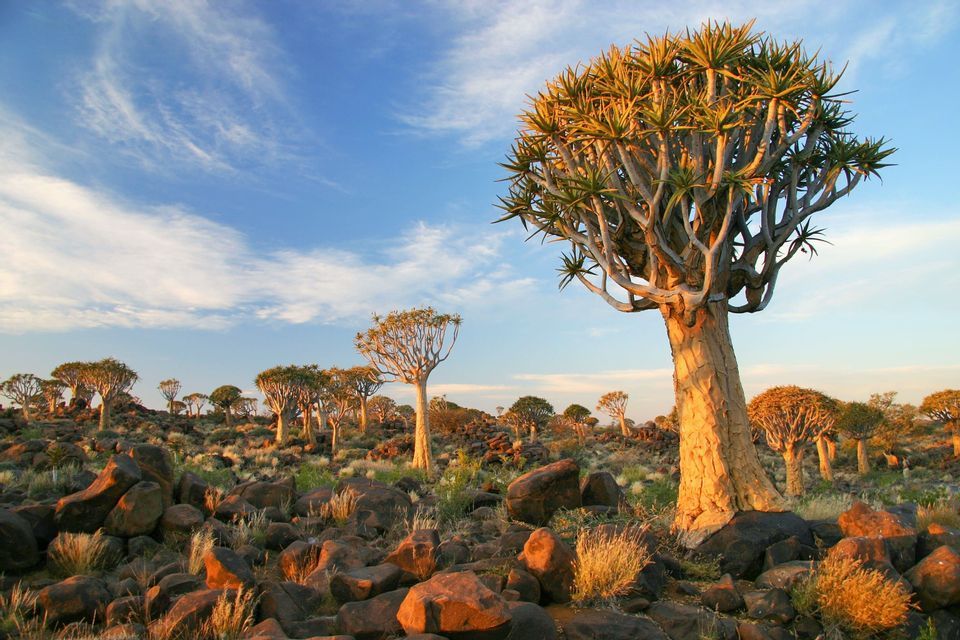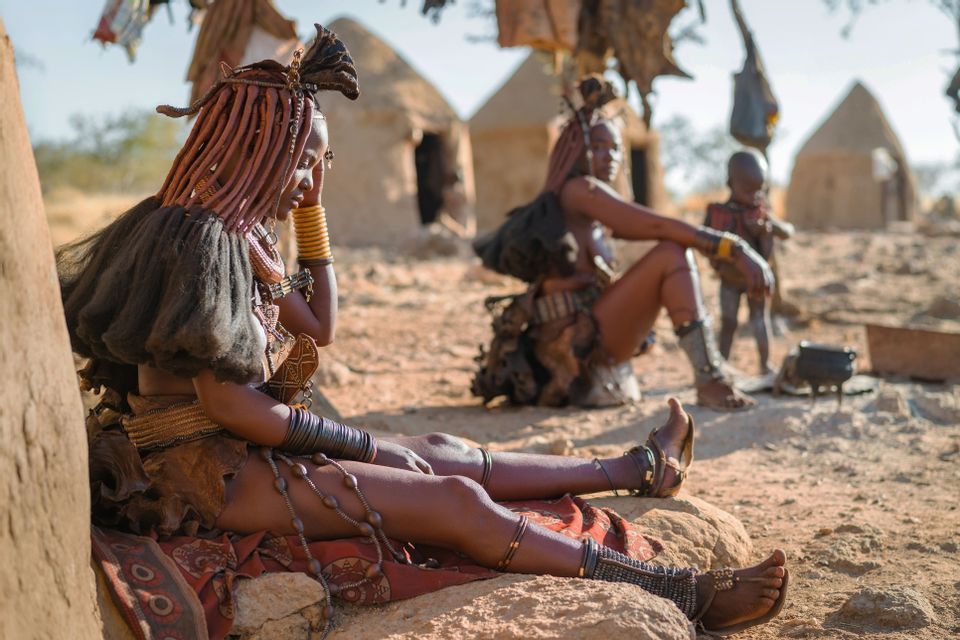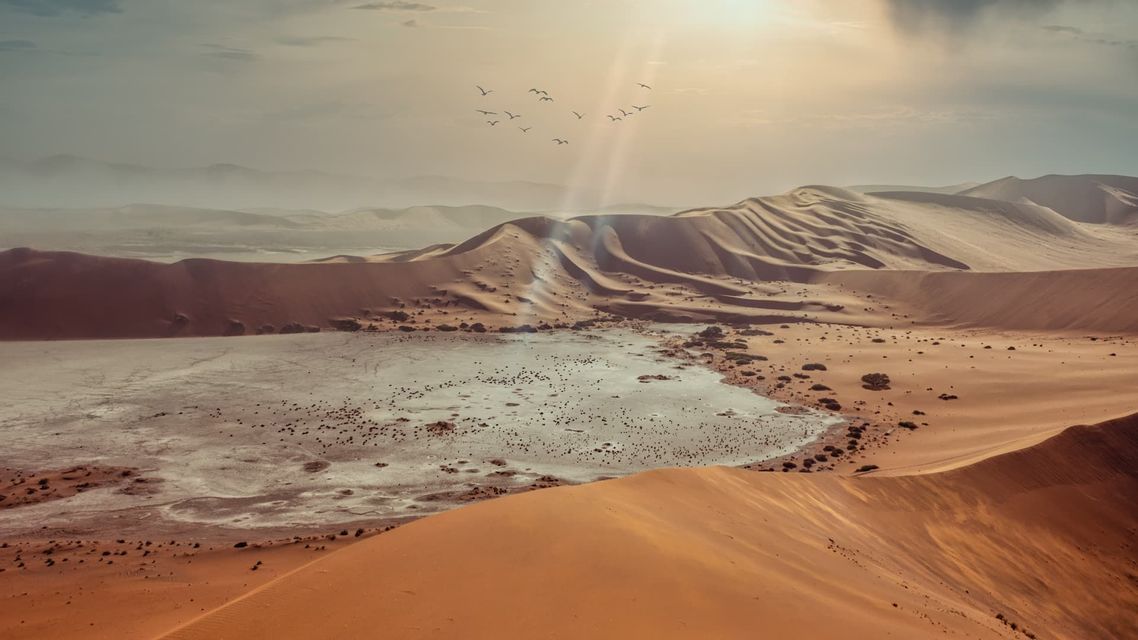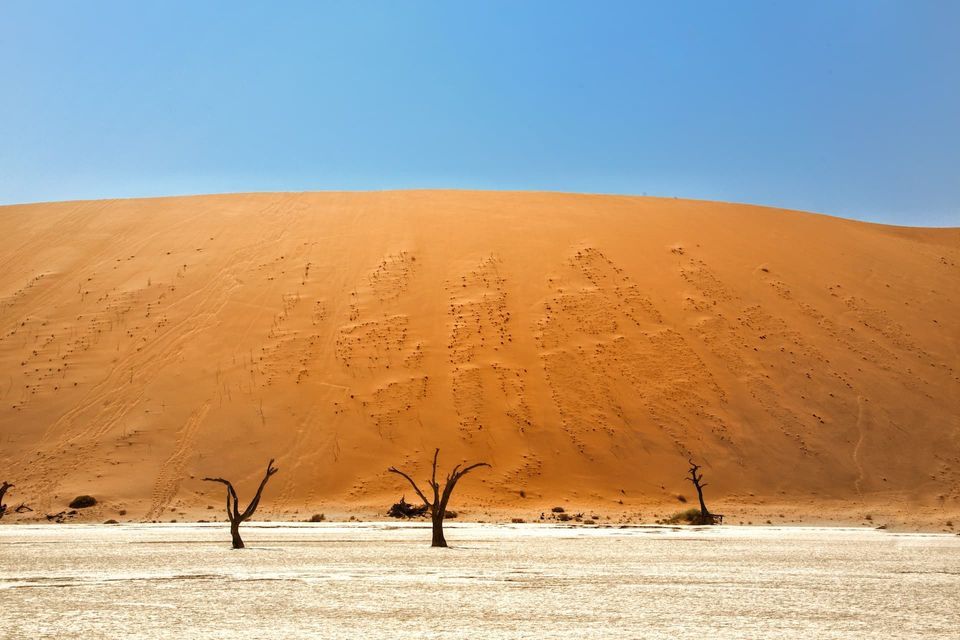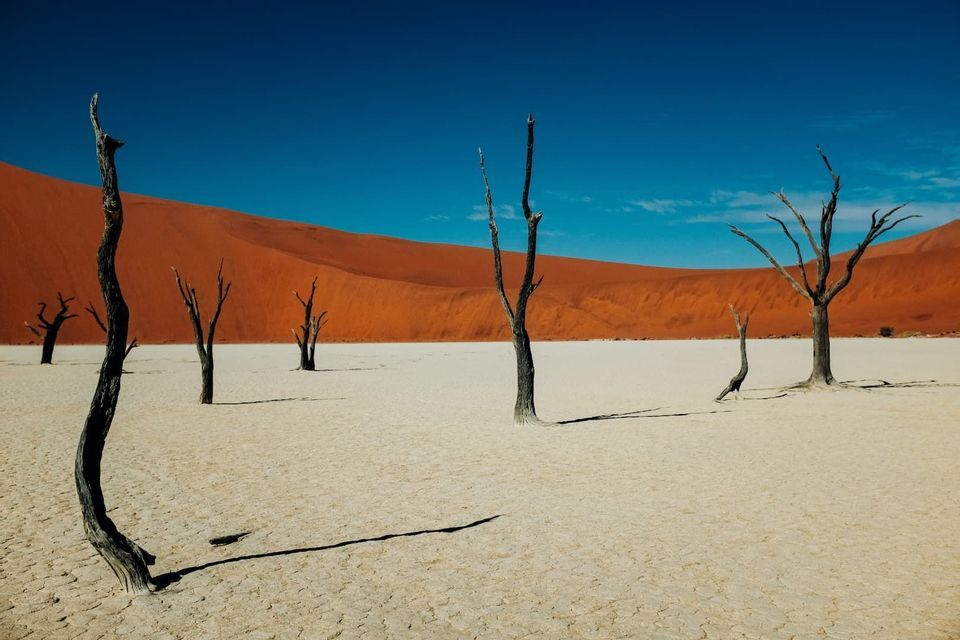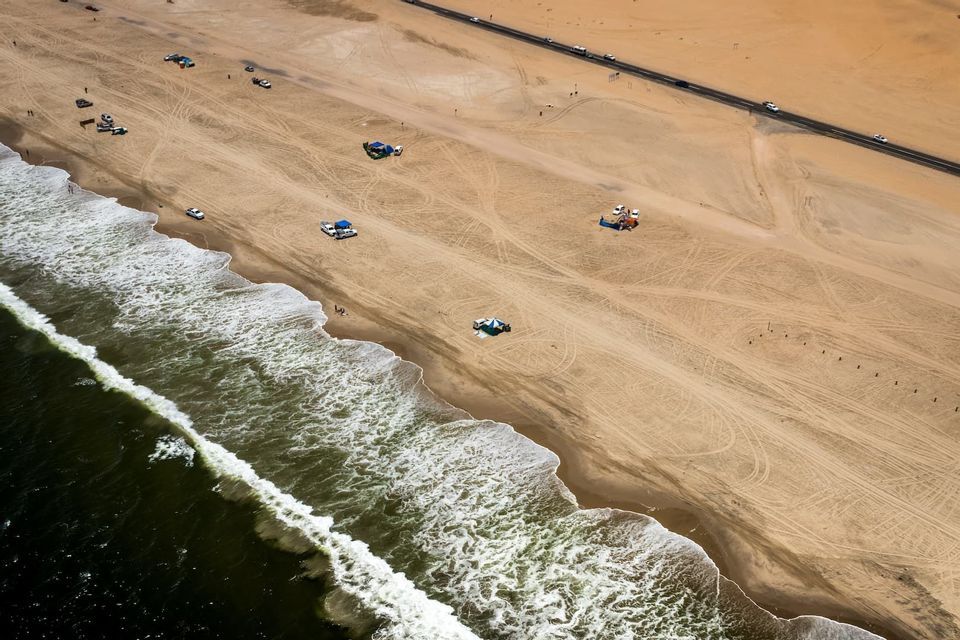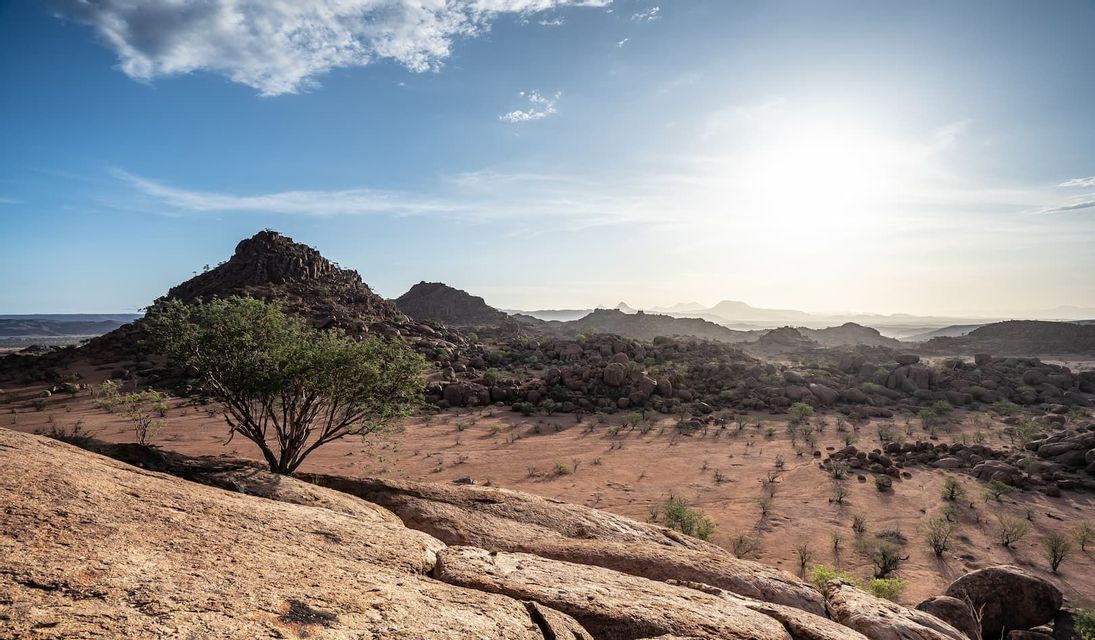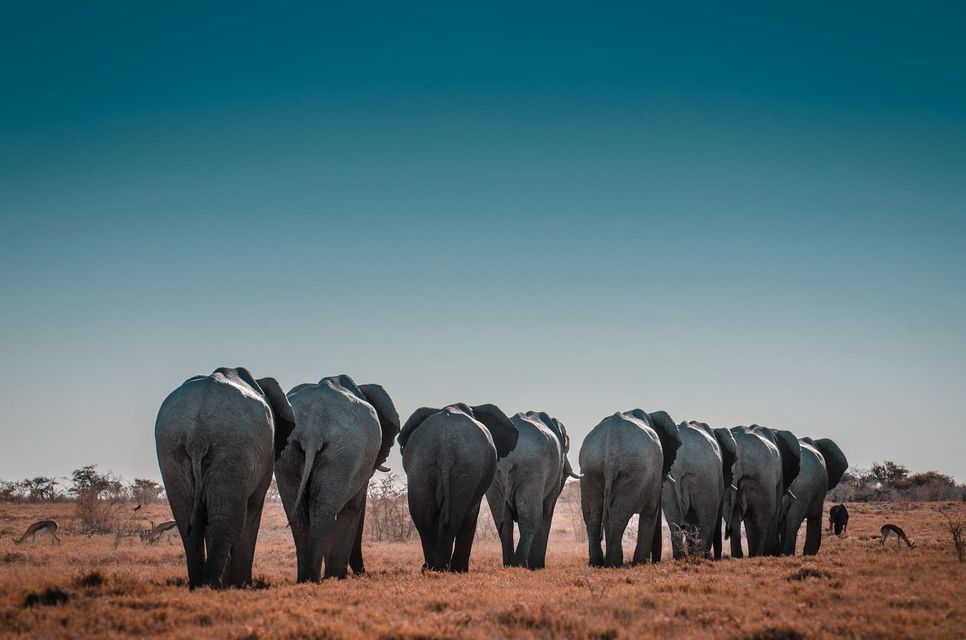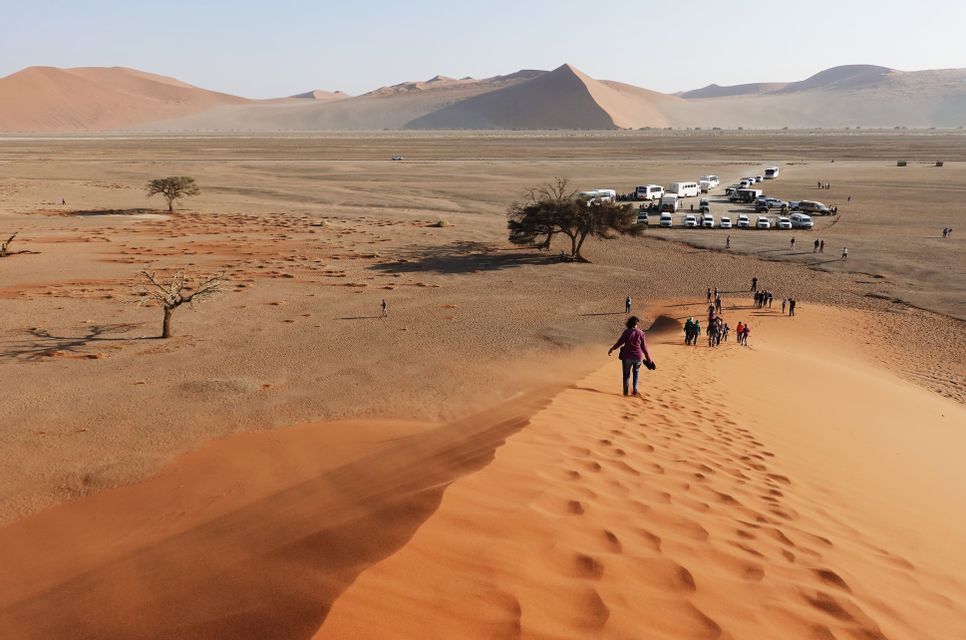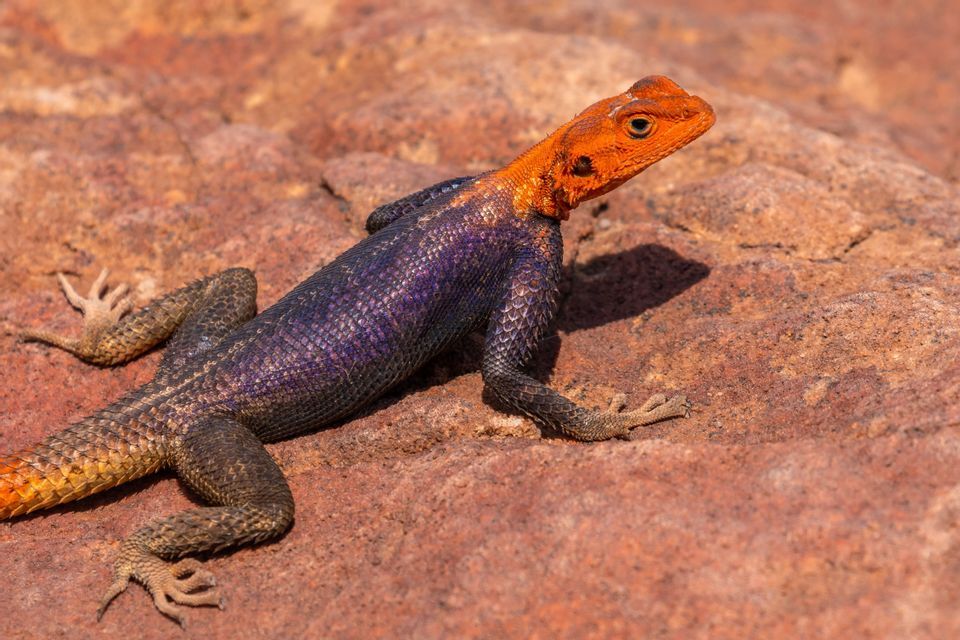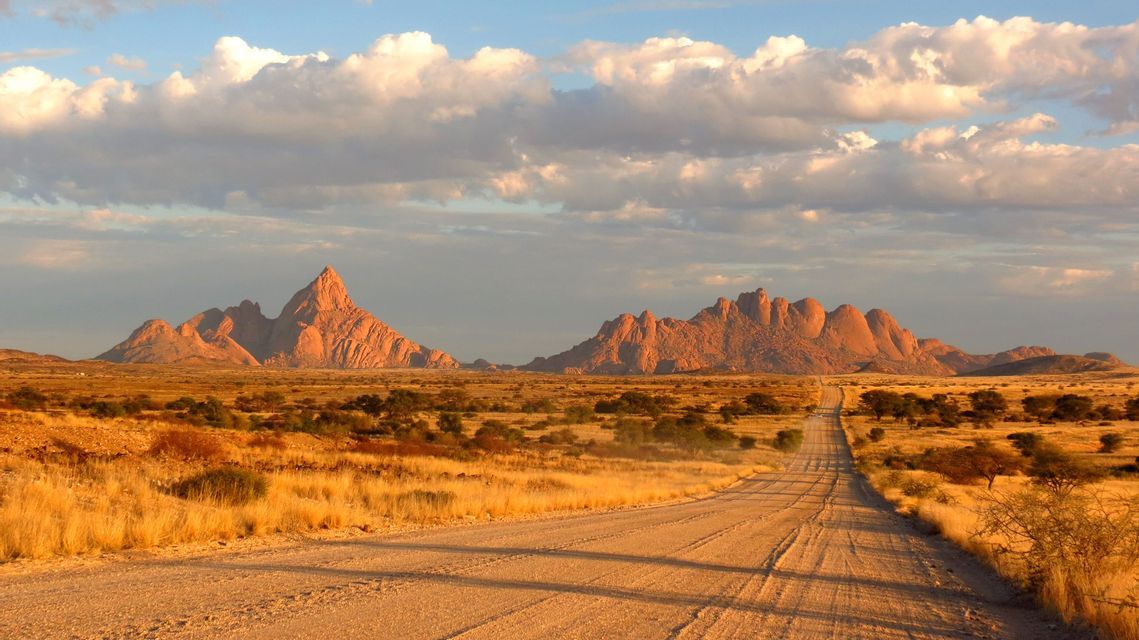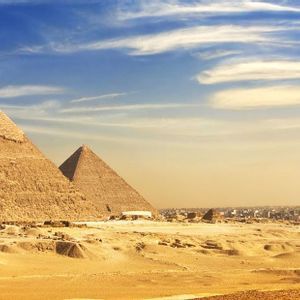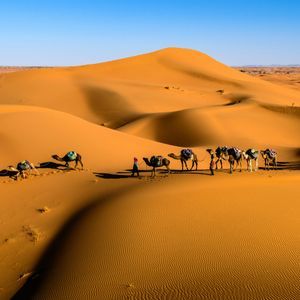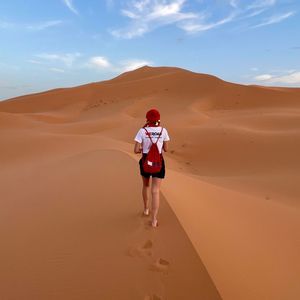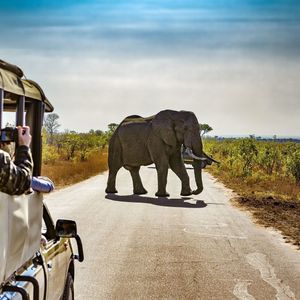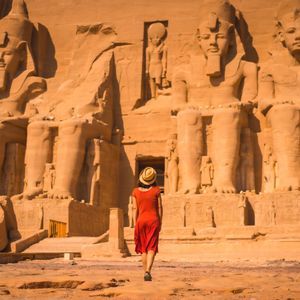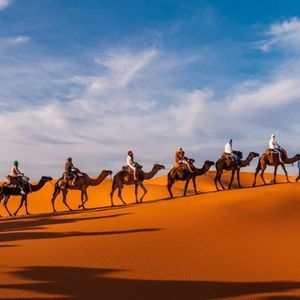Group info
Expected WeRoaders: 9
Itinerary
Africa remains one of the last great frontiers of adventure, and nowhere is this truer than in the stunning landscapes of Namibia. Between its endless savannahs and towering red sand dunes, you’ll feel like you’ve landed on another planet, where Mother Nature reigns supreme.
Our journey begins in the captivating city of Windhoek, but we won’t stay long—we’ll head north to explore the Cheetah Conservation Fund, where we’ll encounter majestic cheetahs for the first time. Next, we’ll venture into Etosha National Park, where lions, zebras, elephants, and giraffes roam freely.
From there, we’ll travel down the Atlantic coast, stopping at Cape Cross and Swakopmund, known for its German-style breweries, before finally entering the enchanting Namibian desert. Our adventure leads us to Sossusvlei and Deadvlei, two of the most breathtaking spots in the country.
Namibia never disappoints, and on this journey, we’ll experience the very best it has to offer, returning home with memories of one of the most spectacular countries on the planet.
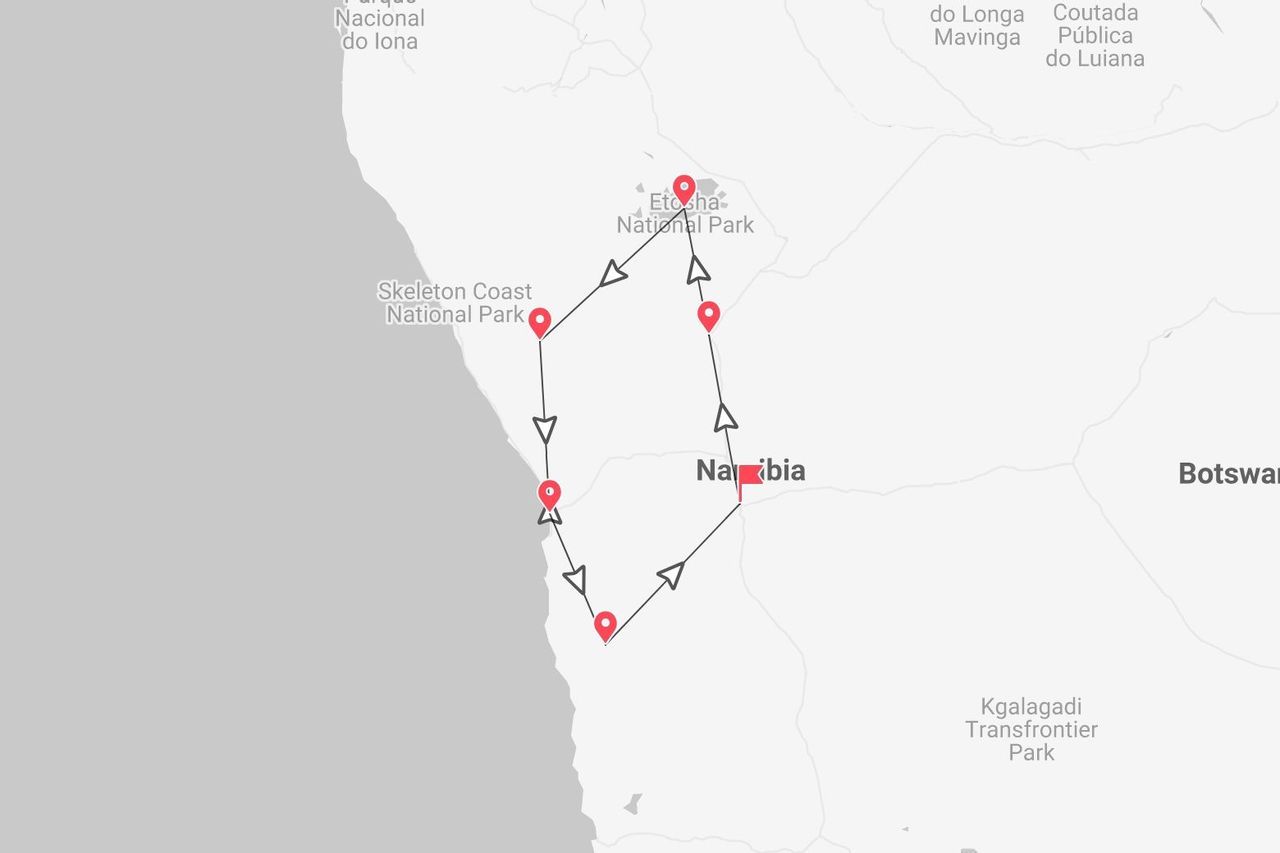
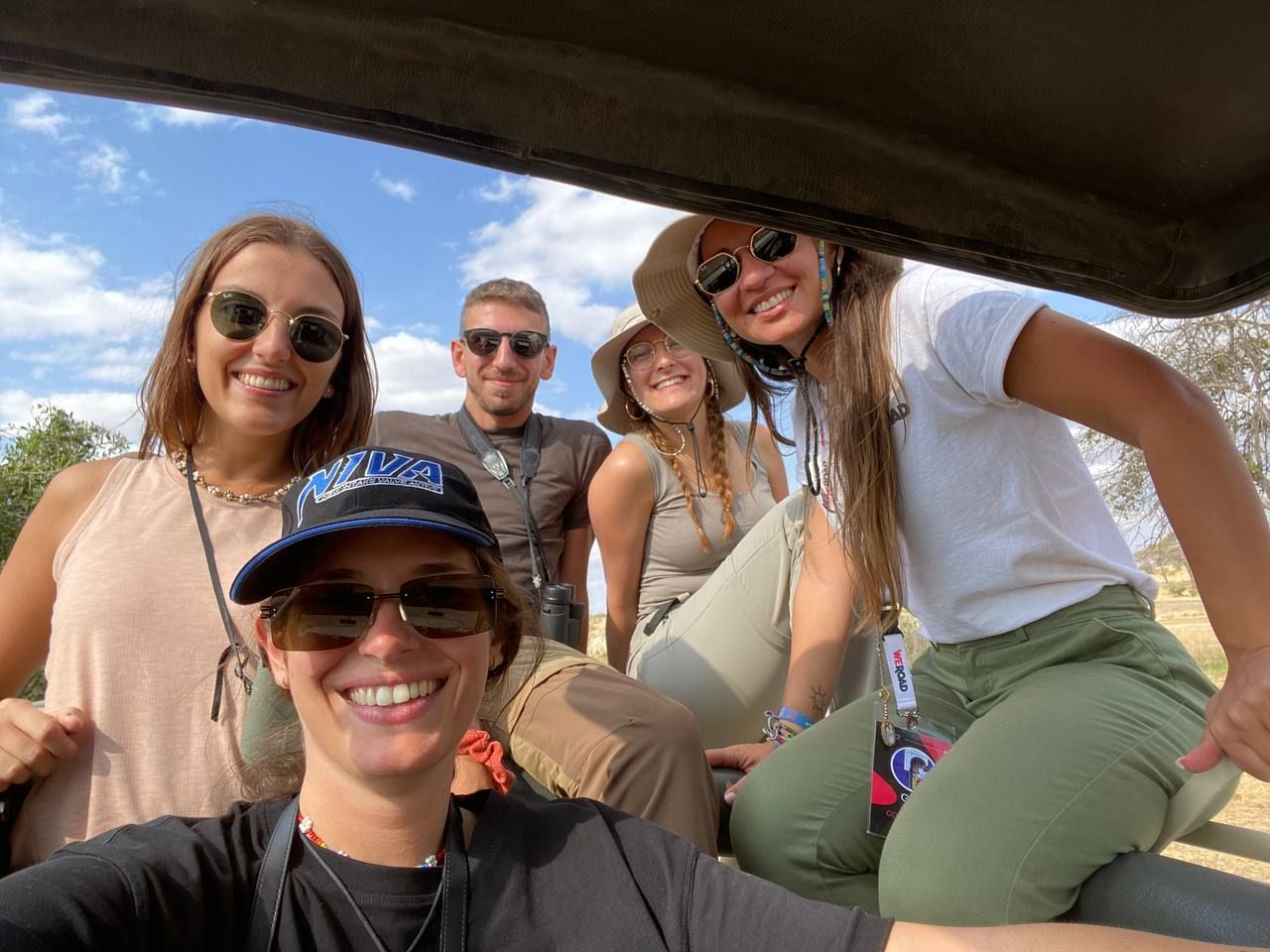
Welcome to Namibia!
Welcome to Namibia
Round trip flights are not included in the package, so you can choose from where and when you want to fly. This is to give you maximum freedom of choice!
Check-in at your accommodation in Windhoek and have your welcome meeting! We are in the vibrant capital of Namibia and from here our journey begins : first let's grab some dinner - the perfect way to break the ice and get to know each other better. What's on the menu? How about some local specialties... Zebra, kudu or crocodile?!
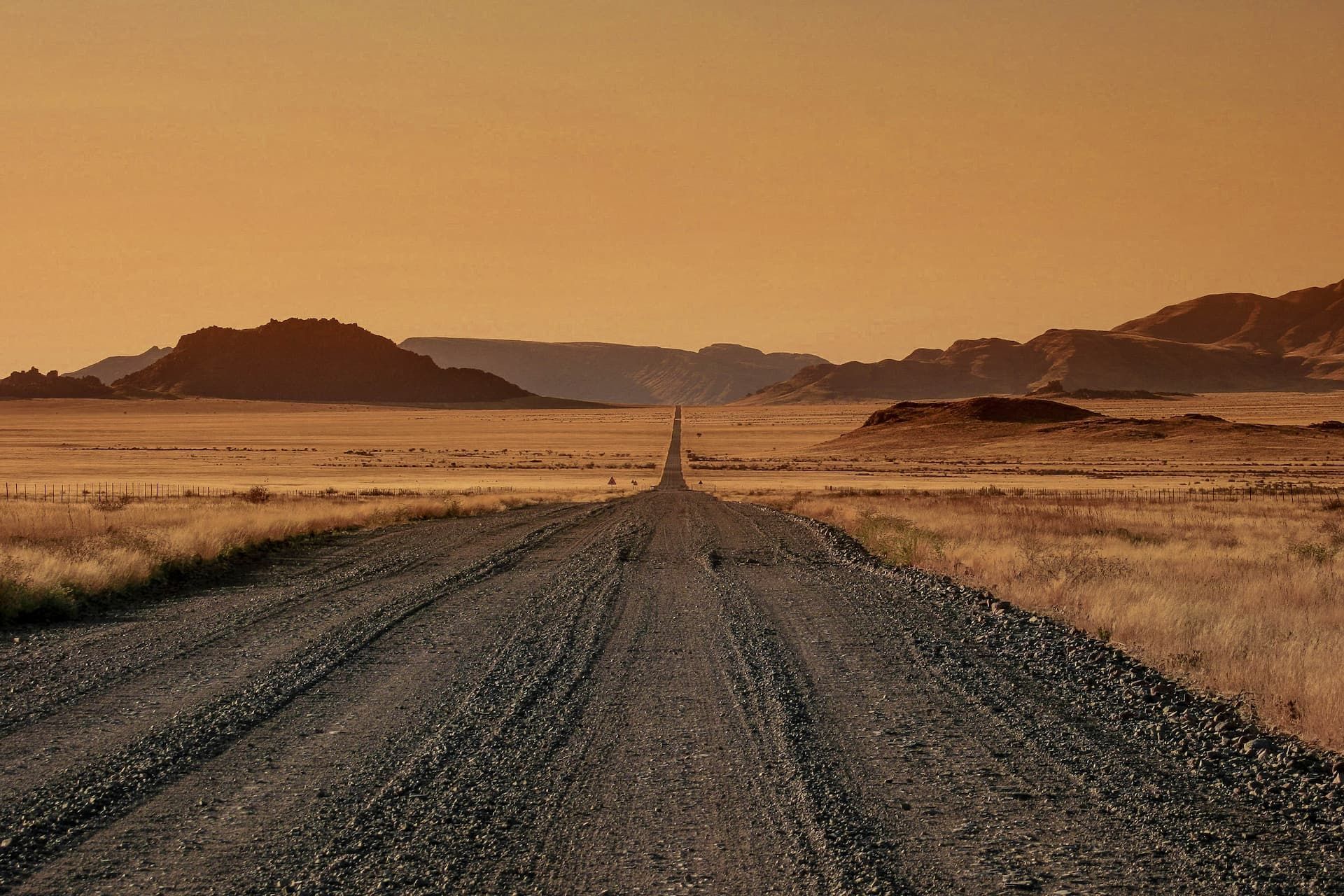
Otjiwarongo
Our adventure begins
It’s our first day in Namibia, and we’re ready to immerse ourselves in the beauty of African nature. After bidding farewell to the capital where we spent the night, we head north. Get comfortable—it’s a long drive, but it’s the perfect chance to take in the vast, unspoiled landscapes of Africa. Here, nature’s laws still reign, untouched by mankind, and it’s a privilege to witness the pure essence of Mother Nature.
As we leave Windhoek, you’ll notice the scenery gradually change. After about two and a half hours, we’ll arrive at Okonjima Nature Reserve, home to the Cheetah Conservation Fund, an organization that has been protecting big cats, including cheetahs, since 1990.
We’ll spend the next few hours learning about the predators of the African savannah. For those eager, there’s the option to go on a safari and observe these majestic animals in their natural habitat—let’s hope we spot at least one! What’s most inspiring is the foundation’s work in rehabilitating injured or traumatized animals to help them survive once they’re released back into the wild.
As evening falls, we’ll leave the reserve and head to our accommodation for the night.

Etosha National Park
Two days of total immersion in nature!
We wake up, enjoy a hearty breakfast, and set off. Today, we have quite a few kilometers to cover, but it’s absolutely worth it: our destination is Etosha National Park, the most famous park in all of Namibia. Once again, we’ll soak in the stunning African landscape flowing past our windows until we reach the park entrance—Etosha, which means "great white place" in the local language, and we soon see why. Much of the area is covered in a blinding white salt desert.
As we enter the park, we’re ready to explore this natural wonder: we have two days to spot as many animal species as possible! Like yesterday, we won’t be lacking in wildlife. We’ll have the chance to see elephants, zebras, giraffes, kudus, lions, hyenas, leopards, and cheetahs. It’ll feel like we’re in the cast of The Lion King!
The skies won’t disappoint either, as we look for vultures, snake eagles, and many other bird species. The landscape will take our breath away: within Etosha, we’ll find the Etosha Pan, a vast salt pan that gives the park its name. It’s believed that around 12 million years ago, this area was home to a lake fed by a river, which eventually changed course, transforming the region into a desert.
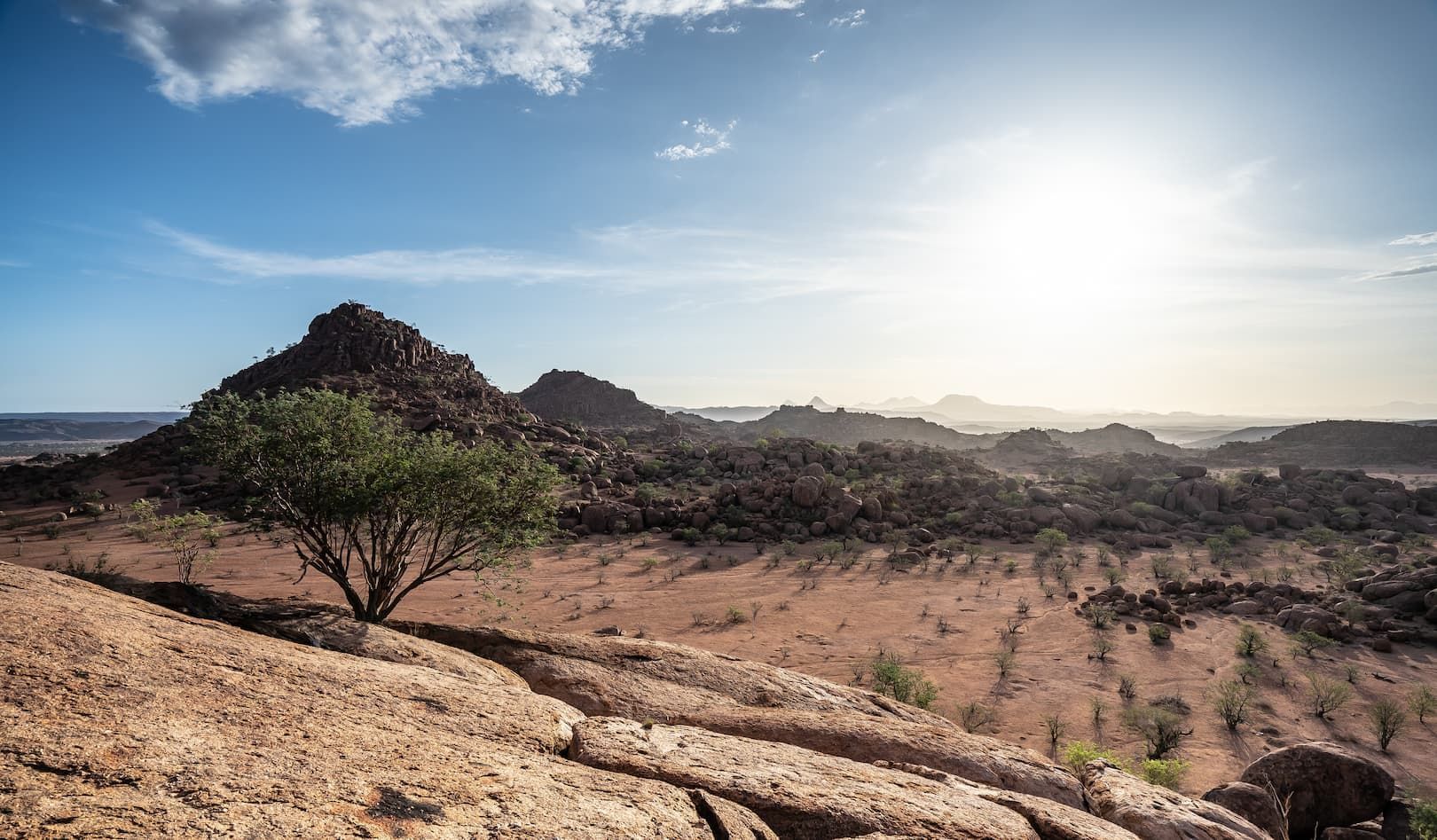
Damaraland
Twyfelfontein and the Petrified Forest
Our next destination? We love the name—it even reminds us of a famous musical—but we didn’t choose it for that reason: Damaraland is one of the most scenic areas of Namibia, a vast, wild, and ruggedly beautiful region that reveals a completely new side of this country.
This area is prime for spotting desert-adapted megafauna, such as elephants and rhinos. We also can’t miss Twyfelfontein, a remarkable rock site in the Kunene region, which boasts around 2,000 petroglyphs—and it’s Namibia’s only UNESCO World Heritage site!
Another highlight of Damaraland, though we could go on, is the Petrified Forest, which dates back millions of years and presents an eerie landscape filled with gigantic fossilized trees, some reaching heights of up to 30 meters.
So, have we convinced you? Let’s go!
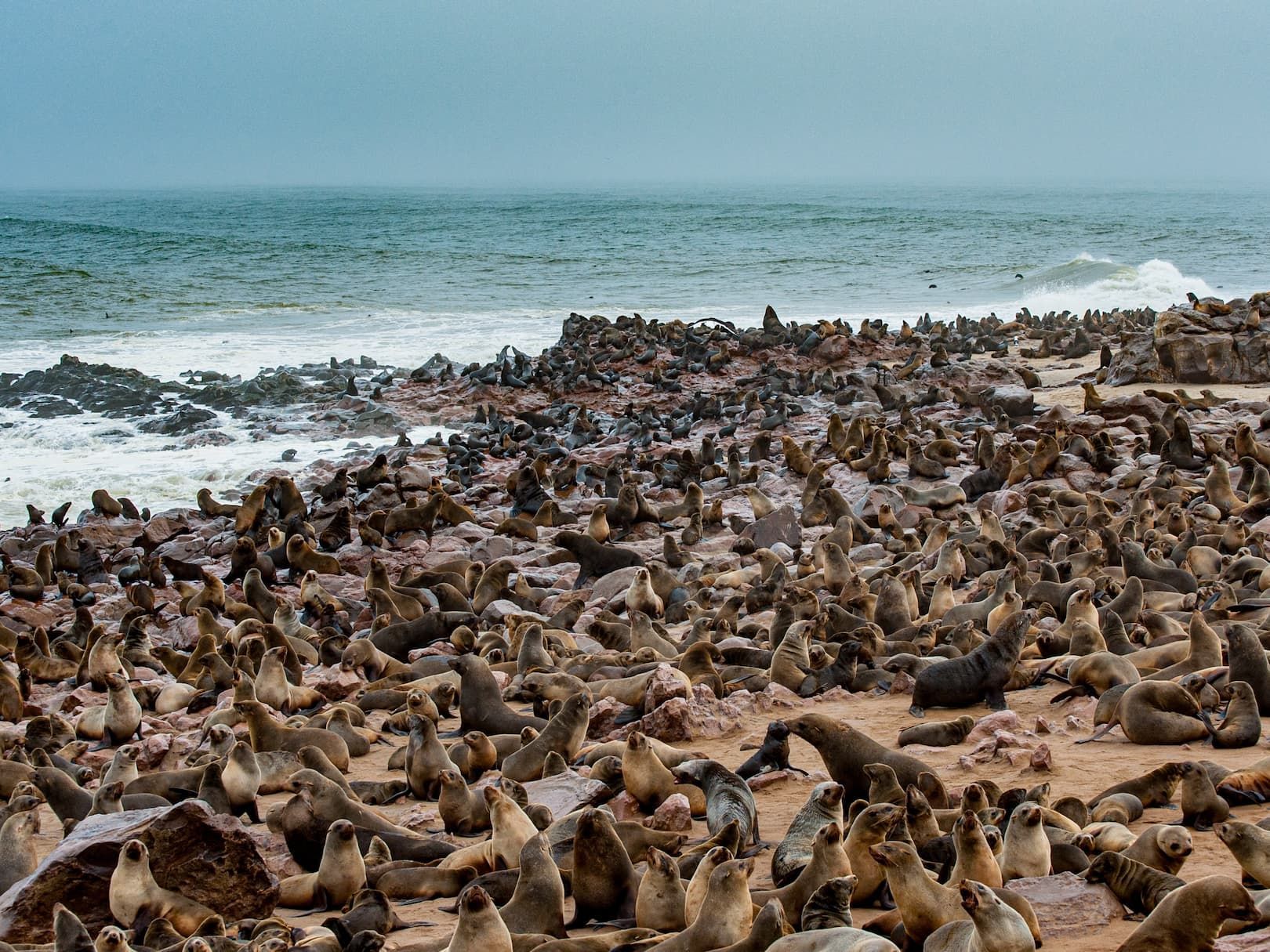
Cape Cross and the last part of the Skeleton Coast
Along the coast
Hello Africa! We wake up early, full of energy and ready for another day of discovering Namibia. Today, we’ll travel many kilometers, but don’t worry: there will be plenty of stops to stretch our legs and breathe in some fresh air.
Our first stop is an incredible location: we’ll journey along the last stretch of the famous Skeleton Coast to reach Cape Cross, where we’ll find... seals! This promontory along the Atlantic coast is home to a protected area housing a large colony of seals—tens of thousands of them, not just a few! Be cautious, as these animals are definitely not friendly; it’s best to enjoy the sight of the sea lions from a safe distance.
In the afternoon, we’ll arrive in Swakopmund. After checking into our hotel and dropping off our backpacks, we’ll take a stroll through the city center, admiring its German colonial architecture—Swakopmund was founded by the Germans in 1892. We’ll find a spot to sample some typical dishes and then enjoy the evening—no stars in the sky, but maybe a nice cold beer!
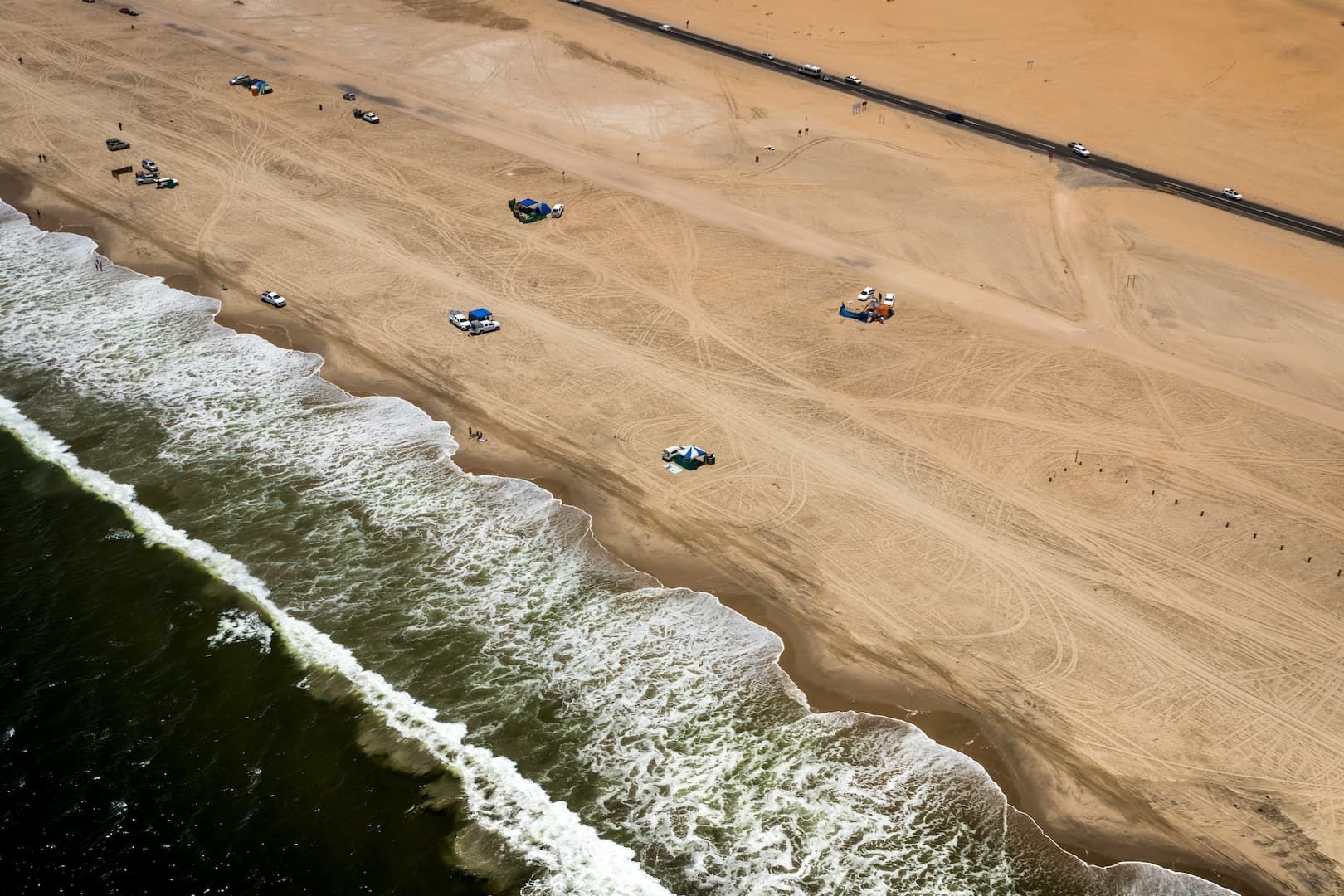
Swakopmund
A free day
Swakopmund is a coastal town in Namibia, situated about 225 miles west of Windhoek. Nestled between the vast Namib Desert and the South Atlantic Ocean, this charming town offers plenty of outdoor adventures to keep visitors entertained for several days. While we don’t have that much time, since we have a day to ourselves, here are some suggestions for filling that day with...
A relaxing boat ride
An exciting quad excursion among the sand dunes
A day of total relaxation on the beach
A gastronomic tour to discover the best restaurants in the city, complete with tastings of local beers...
…and many more fantastic adventures!

Towards the desert
Namib desert
We’re nearing the end of our adventures here in Namibia, but something feels like it’s missing, right? So let’s get moving! We wake up early and set off once again. We still have quite a journey ahead, with our compass pointing south as we enter the Namibian desert, characterized by towering sand dunes in incredible shades ranging from pink to orange to red. We have all the time in the world to soak in the view: the trip will take about five hours, and the morning will fly by as we keep our noses glued to the windows, eager not to miss a single detail of what Mother Nature has crafted in this part of the world.
We arrive at our destination in the early afternoon, entering Namib-Naukluft National Park, where we’re immediately surrounded by the towering sand dunes we had only imagined or seen from afar earlier. The colors are simply breathtaking: each dune is unique, with their hues resulting from the ferrous composition of the sand and its oxidation—those that are the oldest appear a deep red. We don’t waste any time and set off to explore the area: here lie some of the highest dunes in the world, reaching almost 400 meters in height!

Sossusvlei and Deadvlei
Incredible landscapes await!
Once again, we find ourselves in the park that enchanted us yesterday. However, two of the most spectacular locations are still on our list: Sossusvlei and Deadvlei. First, we head to Sossusvlei, a lake that is mostly dry and covered with a crust of salt sand. Will it feel like we’re on Mars? The impression is spot on!
Next, we move to one of the most famous and photographed spots in all of Namibia: Deadvlei. This depression of white sand is surrounded by towering red sand dunes. The most striking feature here is the dead acacia trees, whose dark brown or black silhouettes create an incredible contrast against the vibrant landscape. Once, there was an oasis of acacias fed by a river that eventually changed course, leaving behind one of the most evocative places on Earth. Let’s grab our cameras; in this stunning setting, it’s impossible to take a bad photo!
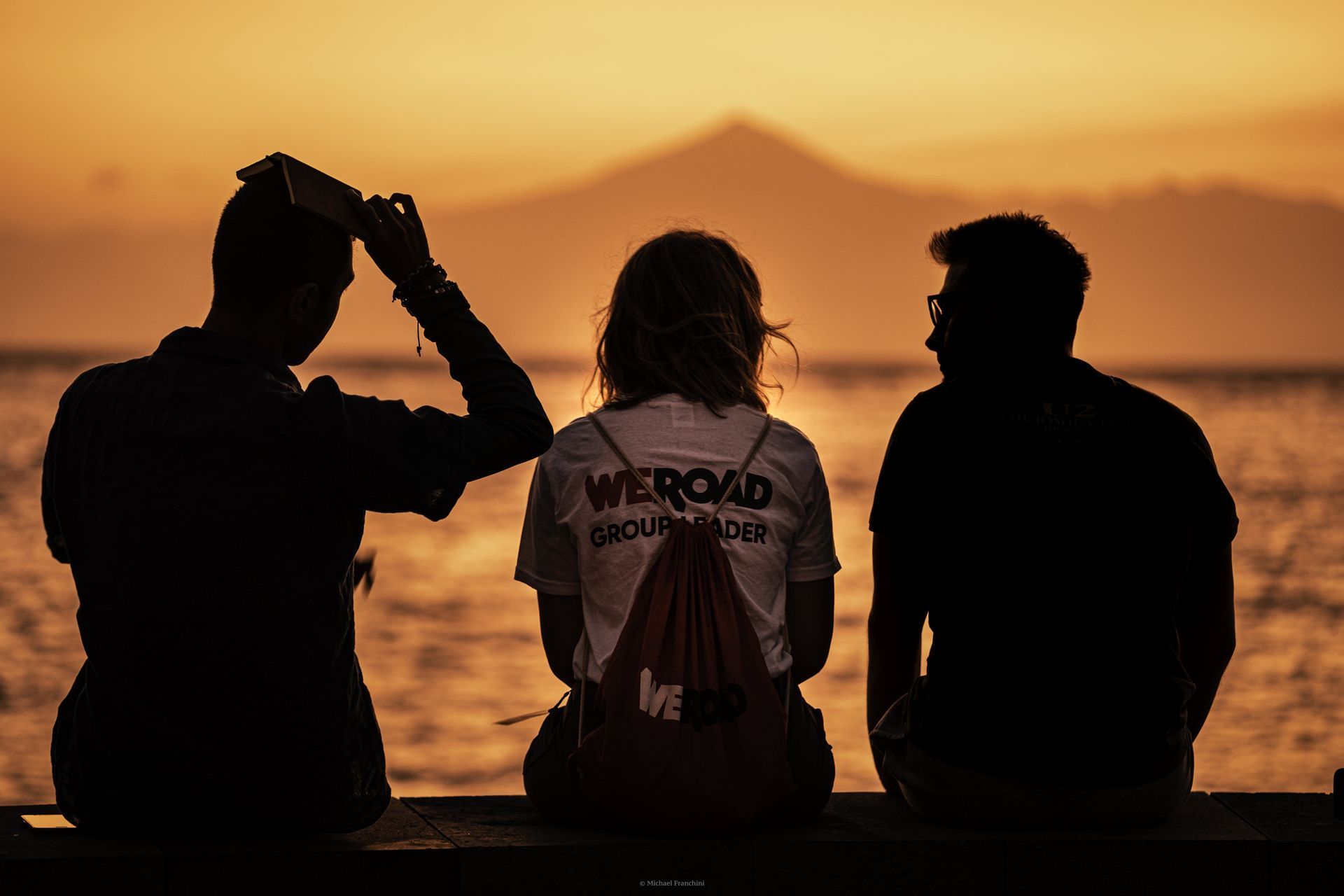
Back to Windhoek
Our last full day
After two days immersed in the surreal landscapes of the Namibian desert, it’s time to return to reality. We settle into our cars and set off back to where our journey began. The capital, Windhoek, awaits us, but first, let’s enjoy the African landscapes one last time from our windows. The drive will take about five and a half hours, giving us plenty of time to choose our favorite playlist and kick off a singing competition!
Around lunchtime, we arrive at the hotel, drop off our backpacks, and find a place to grab a bite to eat.
We have the afternoon free, allowing us to explore the city center and check out various points of interest. One highlight is Christuskirche, a church uniquely located amid the streets. We also can’t miss the Namibia Craft Center, where we can admire local craftsmanship and stock up on souvenirs to take home. If we’re craving a touch of nature, the botanical gardens are a perfect spot to revisit the days spent on the road among Africa’s stunning landscapes.
In the evening, we’ll gather for dinner one last time: the perfect opportunity to relive the best moments of our adventure and end on a high note!
Goodbye Namibia!
Check-out and goodbye
Check-out and goodbye – until your next WeRoad adventure!
What's included
10 nights accommodation in shared rooms
All breakfasts
Private transportation and local guide from day 2 to day 9
Visit the incredible Etosha National Park, where we will encounter lions, zebras, elephants and giraffes! (Entrance fee included in the Money Pot)
Discover the magic of the Namibian desert
Medical and baggage insurance - (coverage limits by destination country/region - €10,000 Italy, €20,000 Europe, €30,000 World, €50,000 USA/Canada)
What's not included
Roundtrip flight to/from destination
Food and beverages when not specified
All extras you'll be able to fit in your backpack
- Anything not mentioned in the "What's included" section
Money pot
The Money Pot is approximately £210/€250 for this trip and is collected on-site by the Travel Coordinator on the first day. The amount of the Money Pot will vary based on the number of activities and extras that the group decides to do.
Entrance fees to the parks mentioned in the itinerary
Visit and/or activities within the Cheetah Conservation Fund
Coordinator's money pot share
All extra activities that each member of the group agree on doing and the coordinator's fee as well
Tips for our local service providers who will help make our tour unique. In this country, everyone expects it because tips are a large part of their salary. As responsible travellers we believe it’s appropriate to reward the services received by adapting to their local culture!
Additional info
- Accommodation
Hotels, B&Bs and private/public campsites.
The no-sharing room option is not available for all departures.
- Transport
Private transfers.
- Private Room Option Show all details
Why WeRoad
-
Small groups, on average 11 people
-
Free cancellation included (deposit refunded as a gift card)
-
Book with a £/€100 deposit
Find your flight
For this trip, we recommend arriving and departing from these airports.
FAQs – Frequently Asked Questions
About this trip
This trip starts at Windhoek. On the first day, we meet at 18:00.
This trip ends at Windhoek. On the last day, you are free to leave anytime from the morning onward, so you can arrange your flights as you prefer!
For this itinerary, you can choose the type of luggage you prefer – we always recommend a backpack, but you can also travel with a duffel bag, a holdall, or (it breaks our heart to say it) a cabin trolley case or a checked suitcase, as long as it’s moderate in size. Our Travel Coordinator will suggest the ideal luggage before departure in the WhatsApp group!
About Namibia
If you are a UK citizen, to find out the entry requirements for Namibia, you can check this informational page from our partner Sherpa. If you need a visa, you can apply for it through Sherpa. If you are not a UK citizen, you can still use Sherpa by changing the nationality in the 'Passport' section.
Before traveling, always remember to check the government website of your country of origin for updates on the entry requirements for Namibia – you wouldn’t want to stay home due to a bureaucratic detail!
- UK residents: review the FCDO Travel Advice.
- US residents: consult the US Department of State Travel Advice.
- Other residents: refer to your government or local consulate's travel advice.
Namibia operates on Central Africa Time (CAT), which is UTC+2. Namibia does not observe daylight saving time. If it is 12pm in the UK, it will be 2pm in Namibia. If it is 12pm in New York, USA, it will be 6pm in Namibia.
Namibia uses the Namibian Dollar (NAD) as its currency. The exchange rate can vary, but typically:
- 1 GBP equals about 20 NAD
- 1 USD is around 15 NAD
- 1 EUR is roughly 18 NAD
You can exchange currency at banks, exchange bureaus, and some hotels in major cities.
You can pay in Namibia using cash or credit cards. Credit cards like Visa and MasterCard are widely accepted in hotels, restaurants, and larger shops. However, it is good to have some cash for smaller establishments or rural areas where card payment might not be available. ATMs are prevalent in towns and cities, so withdrawing cash when needed is easy. Remember that bank fees may apply when using your card or withdrawing cash, so check with your bank for details.
Tipping in Namibia is appreciated but not compulsory. In restaurants, a 10 to 15 percent tip is generally a nice gesture for good service. For taxi drivers, rounding up the fare is common. If you're on a guided tour, consider tipping your guide and driver separately:
- About 10 to 15 USD per day for the guide
- Around 5 to 10 USD per day for the driver
Remember, tipping is at your discretion and should reflect the quality of service you receive.
In Namibia, Wi-Fi is available in most hotels, cafes, and restaurants in urban areas, but it might not be as reliable or fast as you are used to in Europe or the USA. If you plan to travel to more remote areas, you might consider buying a local SIM card or an e-SIM data plan for more reliable connectivity. Providers like MTC and Telecom Namibia are popular choices and offer good coverage throughout the country. You can purchase a SIM card at the airport or local shops. Make sure your device is unlocked for international SIM use.
In Namibia, the official language is English, so you'll have no problem communicating. However, there are several indigenous languages spoken across the country, including Afrikaans, Oshiwambo, and Otjiherero. Here are some useful expressions you might hear or use:
- Hello: Hallo (Afrikaans)
- Thank you: Dankie (Afrikaans)
- How are you?: Ongaipi? (Oshiwambo)
- Good morning: Morokeni (Otjiherero)
In Namibia, the plugs used are type D and type M, which have three round pins. The electrical voltage is 220-240 volts with a frequency of 50 Hz. If you're coming from a country with different plug types, we suggest bringing a universal adapter to ensure your devices can be used without any issues. Always check your device's voltage compatibility to avoid any damage.
Namibia's main religion is Christianity, with the majority of the population identifying as Christian. Most belong to denominations such as Lutheran, Roman Catholic, and Anglican. While there are no strict religious dress codes, especially for visitors, it's always respectful to dress modestly when visiting religious sites. Important religious holidays include Christmas and Easter, which are widely celebrated across the country.
Packing for Namibia means being prepared for diverse climates, from desert heat to cool evenings. Here's a handy guide to what to put in your backpack:
-
Clothing:
- Lightweight shirts and shorts
- Long-sleeve shirts for sun protection
- A warm jacket for evenings
- A hat for sun protection
-
Shoes:
- Comfortable walking shoes
- Sandals
- Hiking boots if you plan to trek
-
Accessories and technology:
- Sunglasses
- A good camera or smartphone for photos
- A universal adapter for electronics
-
Toiletries and medication:
- Sunscreen
- Insect repellent
- Basic first aid kit
- Common travel medication like pain relievers and antihistamines
Namibia's climate can be extreme, so layering is key, and sun protection is a must.
The weather in Namibia can vary greatly depending on the region:
- Coastal areas: Like Swakopmund and Walvis Bay, the climate is mild with cool, foggy mornings and warm afternoons. The best time to visit is from November to April for warmer weather.
- Desert regions: Such as the Namib and Kalahari deserts, expect hot days and cooler nights. The best time to visit is from May to October when the temperatures are more moderate.
- Northern regions: Like Etosha National Park, it can be very hot, especially from October to December. Visit between May and September for cooler, dry conditions ideal for wildlife viewing.
Remember, Namibia’s seasons are opposite to those in Europe and the USA. Summer runs from November to April, while winter is from May to October.
About WeRoad
Round-trip flights are not included in any of our trips because we like to give you autonomy and flexibility: you can choose the airline you want to fly with, the departure airport that suits you best, and how many and which stops you want to make.
Since flights are not included, you also have more flexibility with your travel dates: if possible, you can arrive at your destination a few days earlier or return home a bit later – or even continue independently to a nearby destination!
This is the question of all questions, and here’s the answer, broken down into points!
The Money Pot is a common fund collected in local currency from all tour participants and managed by your Travel Coordinator.
It is used to streamline paymentsfor extra activities, goods and services that the whole group decides to do and to guarantee flexibility in choosing activities and excursions at the destination in line with the mood of the group.
It is typically collected on the first day of the trip in local currency, although at times, the Travel Coordinator may ask for it to be paid before departure.
You’ll find the amount of the money pot on the website under the section ‘What’s included in the money pot’ – how do you get there? Look for ‘What’s included’, scroll down to ‘Money pot? Click here’, and you’ll find the details.
The amount varies depending on the destination chosen.
It is used exclusively for group expenses that ALL participants decide to take part in.
It is estimated based on the experiences of other groups but can vary depending on the needs of the group itself. As such, the Travel Coordinator may need to increase the amount during the trip.
If not all of the money pot is used, the difference will be returned to all participants at the end of the trip in equal amounts.
The Money Pot also covers the Travel Coordinator’s share of the activities included in the money pot, except for those activities that are free for the Travel Coordinator.
If you pay in advance part of the money pot before the trip for certain non-refundable optional activities, unfortunately, the amount cannot be refunded in case of trip cancellation.
We offer several payment methods to fit every need:
1. Credit or prepaid card (Visa, Mastercard, American Express);
2. Instalment payment with Scalapay up to €4,999 (only available with the “Full trip payment” option – not available with the “Deposit and balance” option; pay in 3 instalments up to €1,200 or in 4 instalments over €1,200);
3. PayPal (for selected destinations);
4. Revolut Pay to pay even faster straight from your Revolut account;
5. Welfare credit – BEFORE BOOKING, reach out to us at [email protected].
If you choose the deposit and balance option, you’ll also be able to pay the balance via bank transfer from your Personal Area.
Anyone who books a WeRoad trip has the option to cancel or modify the trip – including both the dates and the destination – free of charge up to 31 days before departure. In case of cancellation, you will receive a 100% refund of the WeRoad trip price. (Deposits will be refunded in the form of a gift card valid for 365 days from issue date.) If you make a change, a price adjustment will be applied to the new trip chosen – meaning, if the new trip is cheaper, we will refund the difference; if it’s more expensive, you will need to pay the difference.
If you’ve purchased the Flexible Cancellation Option (which you can add in the first step of the booking process), you can request a cancellation or trip change until 8 days before departure. In case of cancellation, you’ll receive a 100% refund of the WeRoad trip price, minus the cost of the Flexible Cancellation option. Deposits will be refunded in the form of a gift card valid for 365 days from issue date.
How to request a cancellation or change to your trip? Send us an email at [email protected] or a WhatsApp on +447716573700. Please share the booking reference for the trip you want to cancel or change, and, in case of a change, the new trip you would like to join.
In general, we always choose local accommodations, avoiding large hotel chains, because we love to experience the culture of the place and, whenever possible, contribute to the local economy. Typically, our accommodations are hotels, apartments, guesthouses, and hostels run by local entrepreneurs, with the same standard maintained across all trips in the same destination.
For our Collection trips, which are our premium category, the accommodations are always 4 or 5-star or carefully selected boutique hotels.
The list of accommodations for your trip will be shared with you by your Travel Coordinator between 5 and 3 days before departure, along with other useful details for your adventure!
If you're wondering why WeRoad trips have a money pot, we’re assuming you already know what it is. If not, or if you have any doubts, we invite you to read all the information here!
Let’s quickly recap: The Money Pot is a common fund collected in local currency from all tour participants and managed by your Travel Coordinator. It’s used to speed up payments for extra activities, goods and services that the whole group decides to do and to guarantee flexibility in choosing activities and excursions at the destination in line with the mood of the group.
But let’s get to the point: why the money pot? First of all: it gives us a lot of flexibility. In all WeRoad trips you will have a bunch of Must See/Must Do activities already included - these are experiences, places or activities that simply cannot be missed! Any extra activities is decided by the group, why? Because each group is unique and may have particular wants or desires and the Money Pot allows each group to customise their trip to make it perfect for their requirements!
It also helps us speed up payments – imagine being in the subway in New York City, one by one purchasing the ticket...a nightmare right? Thanks to the Money Pot, the Travel Coordinator can simply purchase the tickets for everyone making the entire processes smoother! Any leftover money will be returned at the end of the trip and split equally amongst all participants.
In some destinations, buying goods or services on site is more economical as you are able to negotiate the price - places like Morocco, or South East Asia, bargaining is part of the culture. As such, our Travel Coordinators will be able to secure the best deal for all participants.
The amount of the money pot is specified in each trip – look for this button
which will take you to a detailed breakdown for each trip, like this:
Even if we don't know the flights of all WeRoaders, there are several ways to find out which flights your travel companions have purchased.
1. Each WeRoader has the ability to communicate their flight details after booking within their personal area so that other travel companions can see the details anonymously. Enter your booking and you will find this section:
[Screenshot]
2. If you want to find out before booking, instead, you can contact us and we will support you in your search or you can ask your travel companions for direct information by joining our Facebook group 'WeRoad... let's get to know each other before leaving! (official)' – (here is the extended link: https://www.facebook.com/groups/weroadit) look for a post associated with your trip, or ask the group administrators for help in getting in touch with your future adventure companions!
If the coordinator has already been assigned to the trip you are interested in, you can easily find his/her presentation post in the group through the site: in the shift list click on 'Ask the coordinator', or in the trip tab, in the coordinator section, click on 'Ask [coordinator name] about this shift in our Facebook group'. For both cases, see the screenshots below!
[screenshot]
On our group trips, the Travel Coordinator and participants speak English – knowing how to speak and understand English is therefore a fundamental requirement to participate in WeRoad.com trips.
On average the groups are made up of 12 people, with a minimum of 3/4 participants and a maximum of 15 (18 in very few cases).
The average age of our groups is 30 years old (more or less!). If you're very curious to know the average age of the group for a tour you're interested in, you can contact us by WhatsApp at +447716573700
Regarding the male-female mix, it is not guaranteed that the group will be equally balanced, because everything depends on you and when and what you book!
Yes! If you're curious, you can take a sneak peek at the group before booking – although, in our opinion, that kind of spoils the surprise! You’ll find the info in the ‘Group’ section for each trip on the departures page, showing how many WeRoaders have already booked. Click the little arrow and you’ll even see their gender and ages – but hey, that’s exclusive info, so we’ll ask you to log in or sign up to see that!
The WeRoad Travel Coordinator is an experienced and skilled traveller and will be the perfect companion for your trip. They will be available for any eventuality and will manage all the logistical aspects of the itinerary (transports, timings, accommodations, meeting points, etc.), so you can enjoy the trip without any worries!
You will have the chance to get to know them when the WhatsApp group is created approximately 2 weeks before departure - this will be the moment to ask any pre-departure questions and get to know the rest of the group! If the trip you are interested in already has a Travel Coordinator assigned, you can contact them before booking – their details will be specified in the schedule or on the trip page, or you can search for their name here. After booking, you will find their contact details in your Personal Area, under ‘Bookings and Trips’ > ‘Your Upcoming Trips’ > ‘Trip Details’.
Yes, in all our trips you will share a room with other same-sex travellers, and the bathroom will either be private or shared only with fellow participants of the trip. The rooms we select can be doubles, triples, quadruples, or multi-bed (up to 8 people in exceptional cases), depending on the destination and availability.
There are never dorms with people outside the WeRoad group, except in certain cases for local experiences, which are specifically mentioned in the itinerary or communicated before booking. These typically involve specific nights in unique accommodations like tents, homestays, or camping, offering a more adventurous travel experience in exchange for some comfort.
During the booking process, you can also choose to opt for a mixed room: in this case, if needed, only those who have agreed to this option may share a room with travellers of a different sex. If you are booking for multiple people together and select this option, the room will not be exclusive to your group but may be shared with other travellers in the group.
When you set off on a WeRoad trip, you’re officially a WeRoader – and as we often say, 'Once a WeRoader, always a WeRoader'. This means that once you’re part of the community, a little piece of WeRoad will always stay with you, even if you no longer travel with us.
But you’re not just a WeRoader during your trips, far from it! The community is alive and active all year round: you can stay in touch by following and interacting on our social media channels, like the Facebook group or the Instagram profile. We can also meet up for a dinner or a trek together at one of the events organised by our coordinators around the world!
